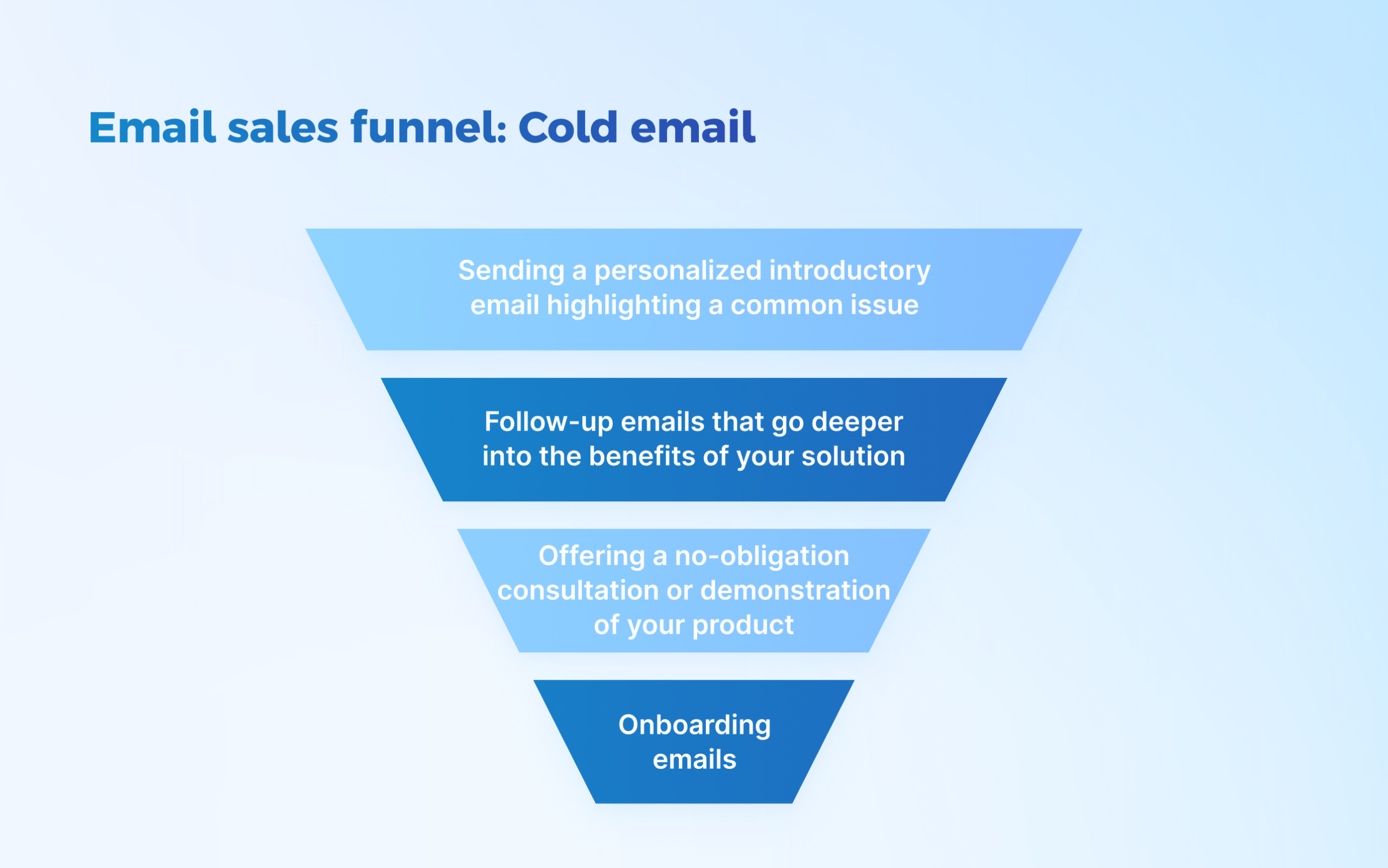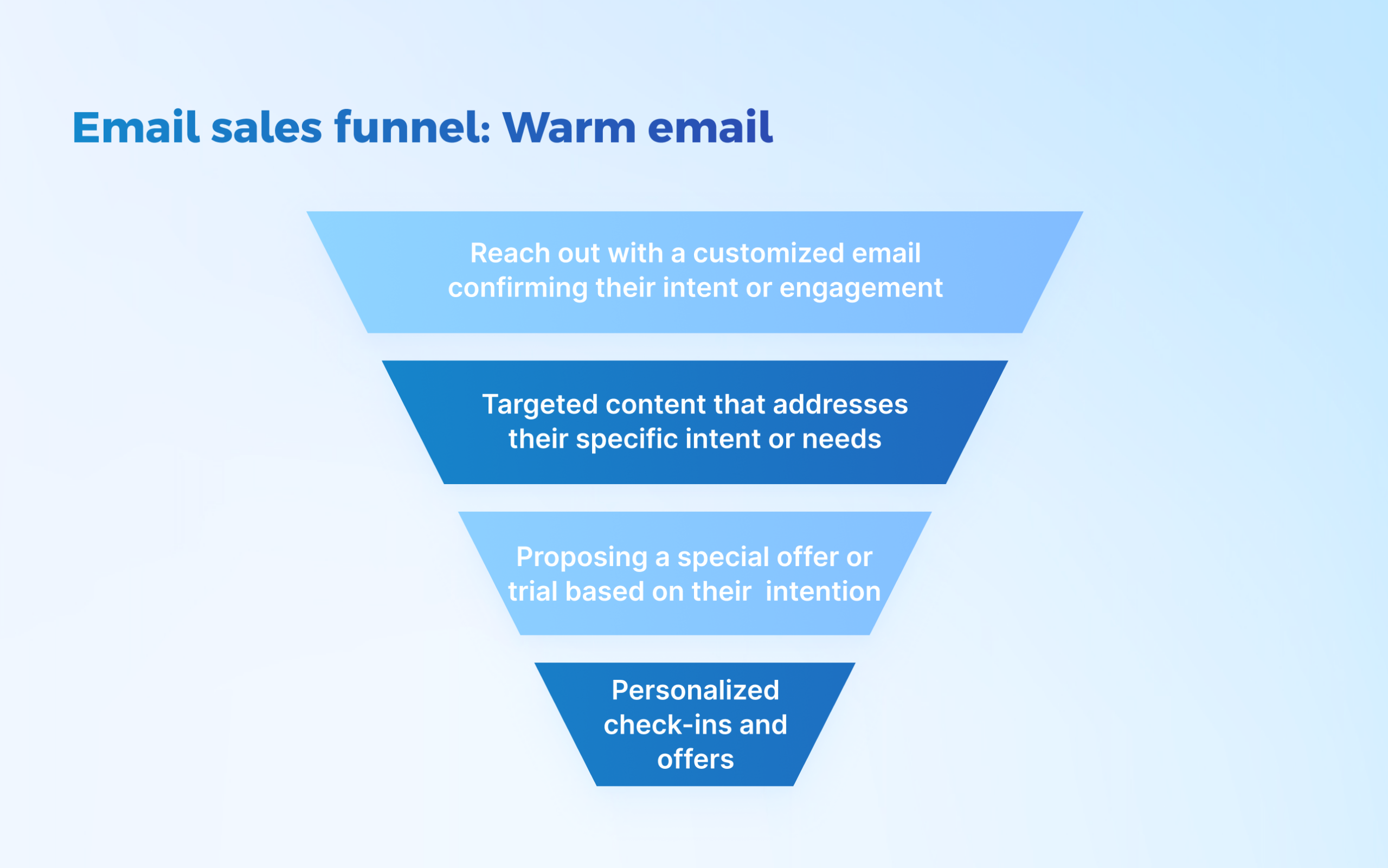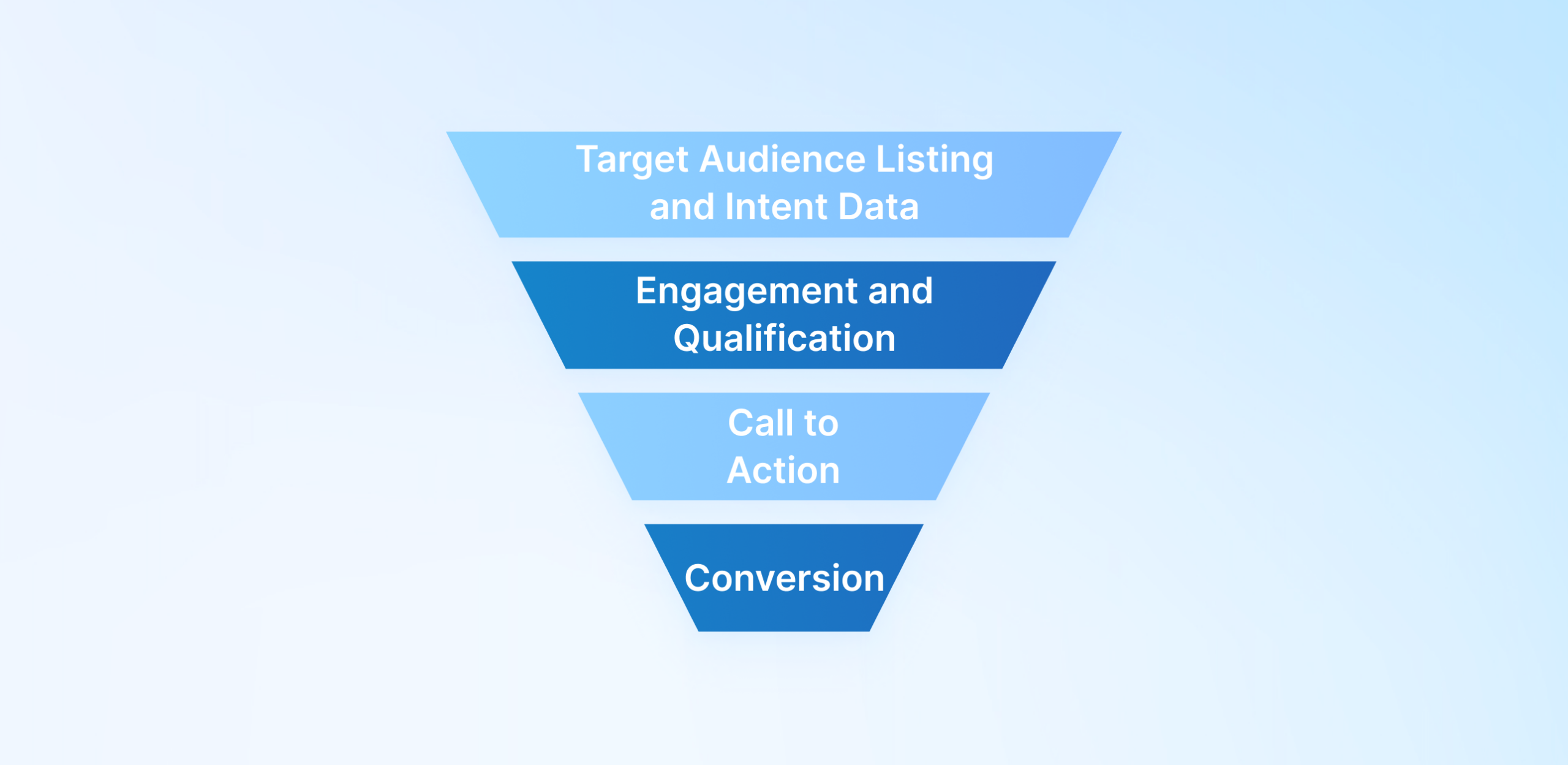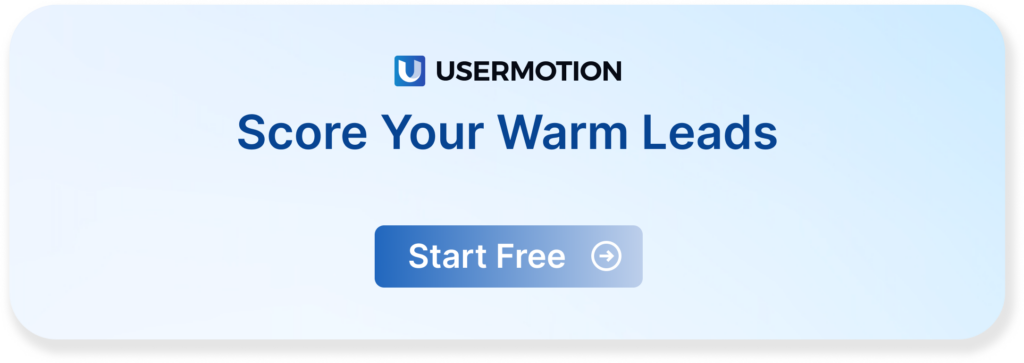I want to start with answering the question in the title. Yes, it really can convert. In fact, for every $1 you spend on email marketing, you can expect an average return of $40. But if you opt for warm outbound rather than cold, you could see an increase in your conversion rates.
So, building a responsive email sales funnel involves much more than just focusing on open rates and click-through rates (CTRs); it’s about creating meaningful flows, content, and conversations.
Understanding Email Sales Funnels
Email sales funnel simply is a pipeline to guide potential customers from the moment you first send email to the point where they make a purchase.
The reason why you need a dedicated email funnel is because this is a completely different strategy. A sales funnel is about moving leads down through different channels and ways, thinking of different engagement methods and sales strategies.
But email operations are more focused, so we need a funnel that focuses only on that.
The Stages of an Effective Email Sales Funnel


The most basic stages of a funnel are awareness, consideration, decision and retention. Therefore, we will follow these stages, but covering their context for sales emails.
Awareness: Target Audience Listing and Intent Data
The primary goal at this stage of email sales funnel is to introduce your value to potential customers who may not yet aware of.
In cold outreach, this means identifying prospects who fit your ideal customer profile but have had no prior interaction with your brand.
For warm outreach, it involves reaching out to leads who have expressed intent through a sign-up, download, or another form of engagement.
For example:
- Cold: Sending a personalized introductory email highlighting a common issue and introducing your solution.
- Warm: Reach out with a customized email confirming their interest or previous engagement.
Here are the tips I would suggest:
- Research your targets thoroughly to personalize your messages effectively.
- For cold emails, use an engaging subject line that arouses curiosity without being spammy.
- For warm emails, refer to the prospect’s past interaction with your product to build closeness.
Consideration: Engagement and Qualification
At this stage, whether cold or warm, the aim is to nurture the leads by providing them with more information about how your product or service can solve their specific problems, guiding them to see the value you offer.
For example:
- Cold: Follow-up emails that go deeper into the benefits of your solution, including case studies or testimonials.
- Warm: Targeted content that addresses their specific interests or needs, based on their interactions with your product.
Here are the tips I would suggest:
- Customize the journey for different types of potential customers by segmenting your email list.
- Use tracking tools to monitor opens and clicks that show the level of interest.
- Ensure messages focus on benefits and solutions, not just features.
Decision: Call to Action
This pivotal stage is all about encouraging leads to take a specific action, such as guiding them towards a decision, signing up for a free trial or scheduling a demo. For cold leads, this might be their first interaction with your product. For warm leads, it’s an opportunity to deepen their intent.
For example:
- Cold: Offering a no-obligation consultation or demonstration of your product.
- Warm: Proposing a special offer or exclusive trial based on their expressed interests.
Here are the tips I would suggest:
- Ensure the action you’re asking for is clear and easy to take.
- Highlight the value and potential ROI of taking the next step.
- Personalize the CTA based on the lead’s previous interactions and intent data.
Retention: Conversion and Relationship
Whether a lead came from cold or warm outreach, once they’ve taken the desired action, the focus shifts to converting them into a paying customer and then retaining them through ongoing engagement.
Example events:
- Cold: Onboarding emails that guide new users through getting started with your product.
- Warm: Personalized check-ins and offers designed to encourage upgrades or renewals.
The tips I would suggest:
- Use feedback from customers to continually refine your email content and offers.
- Develop a loyalty program or regular engagement strategy to keep customers interested.
- Regularly review and update your email sequences to ensure they remain relevant and engaging.
4 Tips for An Effective Email Sales Funnel
There are more, but let’s focus on four email sales funnel tips that helps you a lot.
Email Content for Maximum Impact
The content of the email is the first and foremost thing that should have the attention. You need to create a copy that really meaningful, for both warm and cold outreach.
Once you know what your audience cares about, your emails should speak directly to those interests and needs.
For a cold outreach, an email could begin with a statistic or fact about the challenges of scaling a small business, followed by a brief introduction of how your product or service offers a solution. For warm leads, personalize the message further by referencing past interactions or expressed interests.
- Understanding the specific challenges and needs of your target audience.
- Accurately addressing these pain points makes your emails more relevant and engaging.
- Make us of different types of content elements like images, videos, etc.
This increases the likelihood of recipients moving through the funnel by seeing your product or service as the solution to their problems.
Email Data for Lead Scoring
Using email data for lead scoring is a powerful way to evaluate and prioritize your leads based on their engagement and interest in your email campaigns.
Email signals to track and score:
- Open rate
- Click-through rate (CTR)
- Email replies
- Frequency of interaction
- Content engagement
- Download actions
Technology and Automation
The right tools and strategies can streamline your email email sales funnel efforts and enhance the effectiveness of your strategy.
Platforms like Mailchimp, Outreach and HubSpot offer a range of features for creating, sending, and analyzing the impact of your email campaigns.
- Use automation to send timely and relevant emails to leads based on their interactions with your business.
- Regularly test different elements of your emails, such as subject lines, email copy, CTA placement, and design, to see what works best with your audience
Analyzing and Optimizing
Track open rates, click-through rates, conversion rates and unsubscribe rates to measure the health of your email marketing efforts.
Tools integrated within email marketing platforms can provide these insights, allowing you to make data-driven decisions.
Use the insights gained from your analytics to continuously refine your approach. For example, if you notice that emails sent on Tuesday mornings have higher open rates, adjust your send times accordingly. Similarly, if certain types of content consistently perform well, incorporate more of that content into your strategy.
Frequently Asked Questions
Email sales funnel is a pipeline that is built for leading leads to purchase via email campaigns and outreaches, and see your performance at each stage.
The email funnel is how you create and track all email activities for sales, while the email campaign is dedicated to the activities at each stage.






